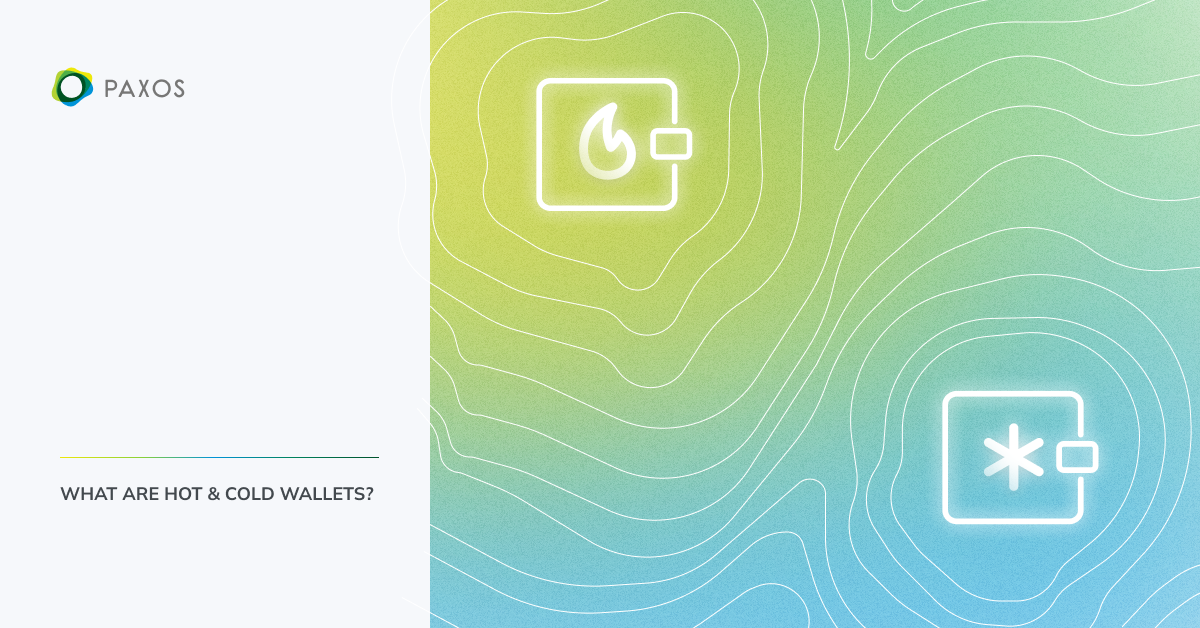
Asset security is crucial in digital finance, serving as a cornerstone for long-term trust and transparency. As interest in digital assets and blockchain technology trends upwards, enterprise market participants should understand the differences between hot and cold wallets to secure customer assets.
In blockchain and digital asset technology, hot and cold wallets are two ways of storing and exchanging digital assets and tokens. Both wallet types have advantages and disadvantages, but each serves specific purposes.
Hot & cold—what’s the difference?
To enterprise customers, it’s not a question of hot or cold wallets, it is a question of when to use each for a secure and optimal experience.
Hot wallets
Hot wallets are digital wallets that are online and are accessible with an Internet connection. Hot wallets maintain a constant online presence, allowing users to manage their assets with immediacy. They facilitate the real-time liquidity essential for instantaneous financial activities — something expected by market participants.
While the speed of hot wallets makes them ideal storage tools in blockchain, their accessibility and convenience comes with a certain amount of risk which is why there is also a need for cold (or offline) storage solutions. Assets stored in hot wallets are exposed to hacking and cyber threats because hot wallets are online. They are suitable for small, everyday transactions or trading, as they allow quick and easy access to the wallets’ assets. It is similar to carrying a small amount of cash in your pocket for daily expenses and leaving the rest in another account. In this way, just as you wouldn’t keep your life savings in your pocket, you would not store all of your digital assets in a hot wallet.
Cold wallets
Cold wallets are offline storage solutions and provide a higher level of security because they are not connected to the Internet, making them unaffected by online attacks. Cold wallets can be hardware devices, traditional pocket wallets or even software wallets stored on offline devices.
When you store your digital assets in a cold wallet, hackers can only access them by physically gaining access to the device containing the wallet. This level of physical and digital detachment makes them analogous to putting your money in an account or vault that requires multiple layers of authentication and physical presence to access. Unlike their counterpart, the hot wallet, the movement of assets is not instantaneous. This is why many enterprises look to find the right balance based on their customer needs and expectations.
The key: finding the right balance between the two
The key to effective security and operations lies in finding the right balance between hot and cold wallet distribution of digital assets. Enterprises with a tactical plan that seamlessly integrates the strengths of both hot and cold wallets can gain a dual advantage. While the hot wallet fuels transactional velocity, the cold wallet offers asset protection, even in the face of digital turbulence. Therefore, diversifying holdings between hot and cold wallets is crucial.
The ideal balance between use of hot and cold wallets can vary depending on what is best for the end user. This makes it important for enterprises to stay informed about the latest security practices and updates in the digital asset space to make well-informed decisions.
Some key considerations in finding the right balance of hot and cold wallet usage:
- Frequency of transactions
- Amount of assets needed for transacting
- Risk tolerance levels
- Proper backup and recovery processes in place for both wallet types
For those enterprises that offer a healthy balance of hot and cold wallet storage solutions, their end users enjoy the best of both worlds: quick access to their funds and the peace of mind that their assets are securely locked away. It is analogous to having a wallet in your pocket for everyday expenses and a vault for your life savings, ensuring your assets remain accessible yet protected.
Ultimately, each organization and individual should make an informed, risk-based decision regarding how to use hot and cold wallets that is based on specific needs, preferences and any other factors important to the security of their customers’ assets.
Want to learn more about ways blockchain and digital asset security can enhance your enterprise offerings?

